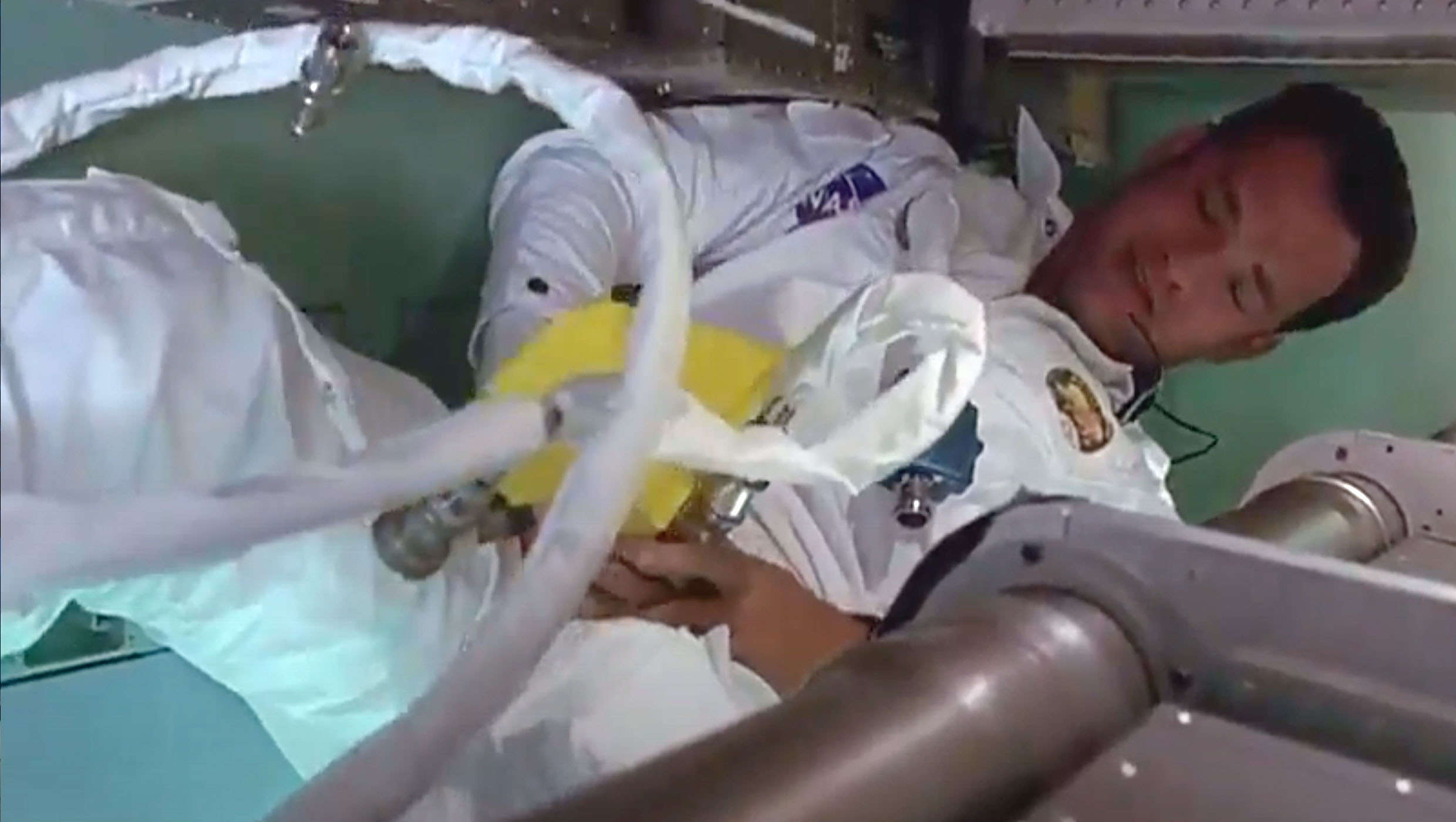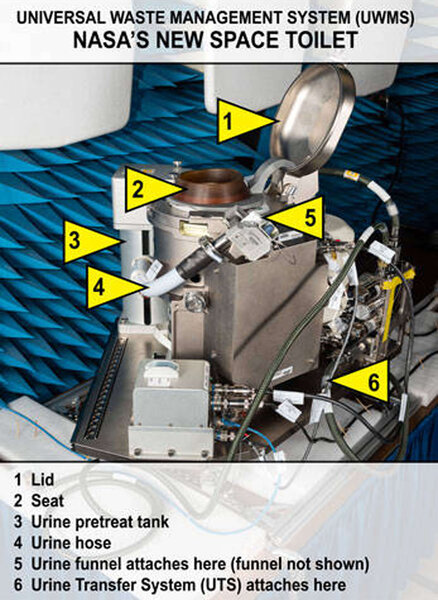Create a free profile to get unlimited access to exclusive videos, sweepstakes, and more!
NASA sends its $23 million toilet to the International Space Station, and it’s flush with space-age updates

If there is one problematic thing about being in space besides microgravity and killer radiation, it’s going to the bathroom. Now astronauts can boldly go.
Space toilets are supposed to prevent things like this infamous scene from Apollo 13. The ‘90s-era toilet that currently resides in the ISS is about as old as the movie. This is why NASA blasted its Universal Waste Management System (UWMS), which is really just the more official name for its updated toilet, to the space station on a Northrop Grumman Cygnus cargo capsule yesterday. It will be installed right next to the toilet already on board (the Waste Control System or WCS). This is a test to see just how well the next-gen commode works before sending future versions of it to the Moon and eventually Mars.
“The Universal Waste Management System (UWMS), includes favorable features from previous designs while improving on other areas on previous Space Shuttle and the existing International Space Station (ISS) WCS hardware, as needed,” NASA officials said in a paper describing the technology behind UWMS.
While this throne isn’t made of fancy porcelain, it was designed to be cleaner, more comfortable and require less crew time than the WCS, with a 75 percent reduction in volume and weight. Another element taken into account during the initial design phases was cost reduction. The cost of each component was compared to the cost of similar components in the WCS to implement design changes that would impact the bottom line (no pun intended). The overall UWMS technology is supposed to be somewhere between the relatively ancient WCS and what will end up heading to the Red Planet. But first, it will have to prove that it can overcome some challenges no one on terra firma thinks about when they flush.
Microgravity is a toilet’s worst obstacle. Commodes on Earth and in airplanes that stay within our atmosphere rely on gravity to take care of the dirty work. In space, anything that falls in has a risk of floating back out. The water that is essential to a toilet cleaning itself is also prone to zero-G problems. To keep everything that is supposed to be in there from venturing anywhere else, there needs to be a suction system in place that forces waste and water downwards. Suction components need to be held close to an astronaut’s body to make sure there are no accidents. The UWMS has made these features both more efficient and more accommodating for female astronauts.
Anyone who has ever complained about airplane toilets has obviously never gone in space.
But what happens after you go? UWMS starts automatically to eliminate the need for flushing. While the WCS separates urine from any fecal matter, plumbs the urine to a venting station and freeze-dries the fecal matter, UWMS is taking this further by sterilizing astronaut urine before it processes and recycles it for reclaimed water. Systems like this will have to be taken seriously on the Moon or any other extraterrestrial territory where astronauts will need all the water they can get, which can be used for anything from drinking to rocket fuel. Astronaut urine also has the potential to be an ingredient in a type of cement that could be used for lunar habitats.
UWMS will also be easier to use and equipped with a sensor to alert crew members when the toilet is full, because astronauts have better things to do than…that.
“General crew consensus is that the user panels on previous systems are complex, offering more functionality than is really needed. Instead of a user panel, the UWMS will turn on when the the seat lid is lifted,” the NASA paper said. “Each urine tank has a signal light. When the internal sensor determines the urine bag is full, the lights will illuminate [and the fecal canisters will function similarly].”
NASA was also crowdsourcing for a lunar toilet design back in July, so watch out for the best seat on the Moon soon.




























